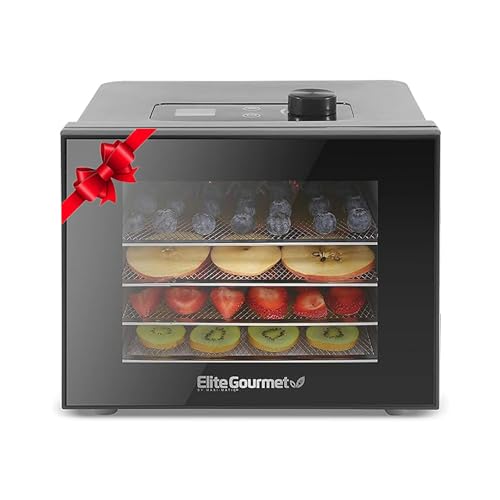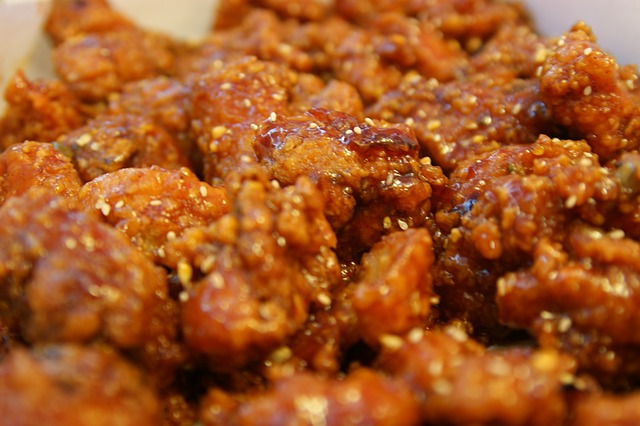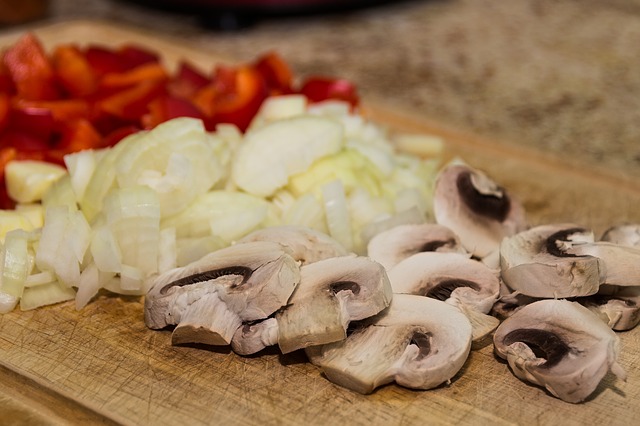
Is a food dehydrator on your holiday wish list? If you’re not sure which one to buy, check out the latest food dehydrator Consumer Reports.
When looking to buy a food dehydrator, it is important to do your research. Not all dehydrators are created equal, and some may be better for your specific needs than others. That’s why we’ve compiled a list of the best food dehydrators based on Consumer Reports ratings. This information can help you make an informed decision about which dehydrator is right for you. So, whether you’re looking for a budget-friendly option or something more high-end, we’ve got you covered. Keep reading to learn more!
The best food dehydrator consumer reports for your needs may not be the same as what others recommend. We’ve compiled the top five food dehydrators based on consumer reports to help you make an informed decision. Whether you are looking for a compact option or one that can handle large quantities of food, we have you covered. Keep in mind that each person’s needs vary, so make sure to consider your own before making a purchase. Which of these food dehydrators would work best for your needs?
Top 10 Best Food Dehydrator to Buy in 2022:
*Note: Score is rated by our Editors and AI.
Table of Contents
Food Dehydrator
Food dehydrator is a machine that removes the moisture from the food and preserves it at low temperature. It can be used to dehydrate fruits, vegetables, meats and fish without losing its important nutrients. The methods of preserving meat products by means of salt or sugar are not lasting, as all such items start deteriorating with time. Dehydrated products do not contain any added chemicals and also provide enough minerals and vitamins.
Food drying has been in practice since long time ago. People living in hot regions like Africa and Asia make use of solar dryer to remove water content from foods before consuming them. The technology was first introduced in Europe only during 18th century and till date many companies manufacture professional grade food dehydration machines for home users as well as restaurateurs.
The foods that can be stored for a longer time without losing any nutritional value are referred as dehydrated food items. Dried fruits, juices, vegetables and herbs from the garden can be preserved in a dehydrator for use anytime during the year. Whenever you want to cook a recipe that calls for apple sauce or hot pepper flakes, simply pick up some from your pantry instead of going out to buy them. Such products common available at supermarkets usually contain preservatives and other chemicals which may not be good for health. The mere thought of consuming such chemical rich dried foodstuff makes many people wonder is there any way to eliminate toxins from water? In fact now-a-days manufacturers have started providing organic fruit snacks made only from natural ingredients.
Dehydrator is an electrical appliance, so it needs to be used under proper supervision. Before you start using the machine, ensure that it is well grounded and its plug has no visible damages. If the food dehydrator is not in proper working condition, then all your efforts will go in vain. The non-working appliance can cause severe fire hazard. Some food items require blanching before they are dried in a dehydrator. For example if you want to make banana chips at home, you need to briefly boil them for 5 minutes in hot water before putting them in the machine.
Some kinds of meat products like beef jerky are commonly available only in American supermarkets or specialty stores selling international food items. You can prepare these snacks yourself within a day by following easy recipes available on the internet. Now you can order dehydrator online from reputed e-commerce sites and receive it at your doorstep next day, if you are a subscriber to certain service providers.
Foods prepared using a best food dehydrator consumer reports have longer shelf life, so they do not spoil or lose their taste even after many days of storage. You may also like reading about filtered water bottles.
What Features To Look For In A Food Dehydrator?
One of the best ways to get more wholesome food in your family’s diet is to dehydrate. When you dry fruits and vegetables, they lose most of their water content, which concentrates their flavor. You can make snacks like beef jerky out of lean cuts of meat because the low-heat drying process removes almost all fat from the flesh.
With so many different models on the market, it can be difficult for a newcomer to find a good food dehydrator that meets his or her needs while not being too complicated. This guide will show you what features to look for in a food dehydrator before making a purchase, allowing you to enjoy rewarding results every time without having to spend too much money or energy figuring things out yourself.
What are the recommended features to look out for?
Vent design is one of the most important features to consider when you are shopping for a best food dehydrator consumer reports. Dehydrators have vents on both sides, which allows hot air to pass through them evenly. The best dehydrator models will have adjustable vents on both ends that can be opened or closed as needed.
Width is another feature that needs careful consideration. A wide model will allow you to fit more trays inside it at once, allowing you to save time without having too few trays getting in the way of your work.
Temperature controls are very important because different types of foods need different drying temperatures. You may damage sensitive enzymes if you dry them at too high a temperature. However, if you don’t dry them enough, bacteria may have time to grow on food that is not yet fully dehydrated. Thus, having an adjustable temperature control is a must.
Timer controls are just as important because they allow you to set the dehydrator at a specific time and do something else while it dries your foods for you without any supervision.
Price is also very important, but it does depend on how much you are willing to spend on a new appliance. If you buy cheap models with fewer features while sacrificing quality, they will only give disappointing results while costing more over time when they need to be replaced. However, buying more expensive models with all the features that are essential doesn’t mean that they will work perfectly every time without any drawbacks either.
As you can see, the features that work best for you will depend on your unique cooking needs and budget. Browse this comprehensive buying guide to find out which features are most important to consider when shopping for a good dehydrator to fit your situation.
How To Use A Food Dehydrator?
One of the most popular methods to preserve food is by dehydrating it. The use of a best food dehydrator consumer reports is easy to do, and provides healthy snacks for both your family and yourself. If you’ve never used one before, read on to find out how simple it is.
First, decide what kind you want because there are several types available:
There are certain things that need to be done first before you can begin using the machine – setting up the machine for use, preparing the food items, and finally actually dehydrating them.
– Set Up Your Machine
Before running your new machine for the first time or after prolonged periods of disuse or neglect (such as storage), make sure that all parts are properly in place and that the machine is cleaned. It’s important to check that all parts are present and properly attached before plugging in your dehydrator for the first time, or after an extended period of not using it.
– Prepare Your Food Items
Fruits and vegetables need to be cut into slices no more than 1/4″ thick. This is necessary because thinner pieces will require shorter drying times whereas thicker pieces may not dry completely without overcooking them. The food items should be prepared with little or no added ingredients besides spices if you intend on adding flavor later by dipping or spraying, etc., which can easily be done at this point before dehydration begins.
When preparing meat products, make sure to remove as much fat as possible from each piece (which may be easier when the meat is slightly frozen). Fat will go rancid much sooner than leaner portions, and can spoil your entire batch of jerky if it’s not trimmed. It’s also important to cut away any areas where bacteria can accumulate.
– Turn Your Machine On
Choose the dryness level you want by adjusting or changing the drying temperature accordingly. Usually around 135 degrees Fahrenheit for fruits and vegetables is a good place to start. For vegetables, just set it for between 12 hours and 24 hours depending on how crunchy you like them. Fruits should be dry within 12 hours while meats may take a full day or longer – up to 24 hours in some cases depending on how thickly cut they are. This process may take some trial and error, so it might be a good idea to experiment with one or two pieces before doing your whole batch.
– Enjoy Your Food Item
Once the machine has completed its cycle, unplug it and allow the contents to cool completely. Once cooled, remove them from their plastic or box trays and store in airtight containers for future use.
Dehydrating food is easy to do no matter what type of food item you’re preparing – fruits, vegetables, fish, beef jerky – there’s really nothing you can’t dehydrate! Best of all, dehydrated foods make great snacks that are healthy for you and your family! Of course once they’ve been exposed to moisture again, they’ll need to be refrigerated or frozen for storage.
So, if you want to prepare healthy snacks for your family this summer, consider getting yourself a food dehydrator – it beats having to buy snacks at the store every time!
If you follow all these simple steps on how to use a best food dehydrator consumer reports , then you will quickly see that it is an easy and great way of preserving many types of foods. You don’t even have to pay for expensive foods when you can just go out into your back yard and pick some wild berries. It is really surprising what types of items people around the world eat on a daily basis.
FAQs About Best Food Dehydrator Consumer Reports
What Is The Difference Between Fan-Circulated Dryers And Stackable Models?
Fan-circulated dryers have lower overall operating costs because they draw less power than other types of dehydrators while providing more even heat distribution inside them, but they require tall ceilings in order to be placed under fan units that are typically installed near or above ceiling level. With these models, all of the air in the room circulates through the appliance before leaving via fans and ceiling ducts.
Stackable models are more popular than fan-circulated dryers because they can be placed on counters near wall outlets, making them easier to access and use. They also have an advantage of being able to dry large batches of food at once, but stackable dehydrators aren’t as good for drying small quantities in succession.
How Do I Know If A Model Has Enough Trays For My Needs?
As long as you pay attention to how many square feet of space each tray will cover inside the machine when it is set up on its highest setting, you won’t run into any trouble fitting all of your foods inside since most manufacturers will list this important information in the product specs. Keep in mind that some brands and models may require you to rotate the trays in order to ensure proper air circulation and even drying.
How Do I Know If A Model Is Large Enough To Hold All Of My Foods At Once?
The best way to determine whether or not a dehydrator has enough space for your needs is by comparing its dimensions with the dimensions of your kitchen counter top, including the height of any cabinets above it. Keep in mind that most dehydrators work best when placed near an electrical outlet and away from windows or solid walls that can block airflow inside them.
What Types Of Foods Can Be Dried In A Food Dehydrator?
Any type of food can be dried in a food dehydrator. Vegetables like mushrooms and cucumbers, fruits like apples and bananas, meats like beef jerky, fish sticks or chicken thighs, herbs from your garden – all of these foods can be dried in a food dehydrator. While some models are better for certain types of foods than others because they have the right features to dry them quickly and evenly, you’ll find that all of them work best when used according to their recommended settings.
What Temperature Settings Do I Need?
The temperature settings on food dehydrators vary from one model to another because different types of foods require different drying temperatures. For example, vegetables need a higher temperature while meats require a lower one in order to avoid cooking them too much before the dehydration process is complete. Some machines have just one setting that works well for all types of foods, while others have variable settings that can be changed depending on the type of food that will be dried next.
What Should I Look For In A Timer?
Timer settings are also important to consider when selecting a best food dehydrator consumer reports because they make it possible to set up your machine before heading out to work or sleep without worrying about leaving it unattended. Timers are especially important for busy people who don’t have enough time throughout the day to tend their appliances, but you’ll find that most models come with timers as standard features nowadays.
How Do I Know Which Noise Level Is Appropriate?
Noisiness shouldn’t be your main concern when shopping for a dehydrator because all models are designed to run quietly on their lowest settings. Instead, pay attention to the noise level on higher speeds as well as any potential problems with the unit vibrating across countertops and with its fan blades humming or rattling inside.
What Types Of Materials Are Used To Make Dehydrator Trays?
The main material that’s used to make most dehydrator trays is plastic, but you’ll also find models with stainless steel trays and even screens that allow heat to circulate more evenly inside them. You can easily tell which trays are most suitable for your needs by checking the product specifications of the dehydrator model you’re interested in buying since they list all relevant information about their features and components.
>>> See more: The Eurolab Food Dehydrator 2 | Best food dehydrator consumer reports
Conclusion paragraph: Food dehydrators are a great way to preserve food and have been gaining in popularity. If you’re in the market for one, it can be tough to decide which is the best food dehydrator Consumer Reports has to offer. We’ve taken a look at five of the top-rated models and broken them down for you. So, whether you’re looking for an entry-level dehydrator or something more high-end, we’ve got you covered. Have you decided on what type of dehydrator you want? If not, read on for our recommendations!
Read more:













